
The Majestic Acueducto de los Pilares: A Historical Marvel in Oviedo
Discover the Acueducto de los Pilares, a breathtaking historical landmark in Oviedo, showcasing stunning architecture and rich cultural heritage.
The Acueducto de los Pilares, a stunning historical landmark in Oviedo, is a must-visit for tourists seeking to explore the rich cultural heritage of Asturias. This architectural gem, with its impressive arches and intricate design, offers a glimpse into the region's history and engineering prowess. Surrounded by lush greenery, it's an ideal spot for photography and leisurely strolls.
A brief summary to Acueducto de los Pilares
- C. los Pilares, Oviedo, Asturias, 33012, ES
Local tips
- Visit early in the morning or late afternoon for the best lighting for photos.
- Combine your visit with a stroll in the nearby parks to fully enjoy the scenery.
- Look for informational plaques around the aqueduct for interesting historical insights.
- Bring a picnic to enjoy on the lawns surrounding the aqueduct, enhancing your visit.
- Check for any local events or festivals happening nearby to enrich your experience.
Getting There
-
Walking
If you are starting from the city center, head southwest on Calle Uría towards Plaza de la Catedral. Continue straight to Plaza de la Catedral and enjoy the stunning cathedral. From there, take the exit towards Calle del Milagro and walk straight until you reach Calle de la Lila. Turn left onto Calle de la Lila, and follow it until it becomes Calle de la Vega. Continue along Calle de la Vega, which will lead you to the intersection with Calle de los Pilares. Turn right onto Calle de los Pilares, and the Acueducto de los Pilares will be on your left.
-
Public Transport
You can take bus line L1 from the city center. Board the bus at the nearest stop, which is usually at Plaza de la Paz. Stay on the bus for approximately 10-15 minutes, depending on traffic. Get off at the 'Los Pilares' stop. Once you exit the bus, walk a short distance down Calle de los Pilares, and the Acueducto will be directly ahead.
Discover more about Acueducto de los Pilares
Iconic landmarks you can’t miss
Escultura Hombre sobre Delfin
0.2 km
Explore the captivating 'Hombre sobre Delfin' sculpture in Oviedo, a stunning blend of art and nature that embodies the city's vibrant cultural spirit.

Monumento a las víctimas del terrorismo
0.6 km
Explore the poignant Monument to the Victims of Terrorism in Oviedo, a striking tribute that inspires reflection and honors resilience amidst tragedy.

Monumento a los hacendistas asturianos
0.6 km
Explore Oviedo's Monument to Asturian Landowners, a stunning sculpture celebrating the agricultural heritage of Asturias and its resilient landowners.

Monumento al General Sabino Fernández Campo
0.7 km
Explore the Monumento al General Sabino Fernández Campo, an iconic tribute in Oviedo that celebrates history and artistry amidst beautiful surroundings.

Monument to Alejandro Casona
0.7 km
Explore the Monument to Alejandro Casona, a stunning sculpture in Oviedo celebrating the legacy of one of Spain's literary greats amidst beautiful surroundings.

Culis Monumentalibus
0.8 km
Explore Culis Monumentalibus: Oviedo's iconic sculpture, blending artistry with rich cultural heritage in the heart of Asturias.

De Asturias Historical Archive
0.8 km
Uncover the rich history of Asturias at the De Asturias Historical Archive, a hidden gem for culture enthusiasts and curious travelers.

Memorial to José Tartiere
0.9 km
Experience the beauty of Asturias at the Memorial to José Tartiere, a remarkable sculpture celebrating local heritage in the heart of Oviedo.

Monument to Marqués de Santa Cruz
0.9 km
Explore the stunning Monument to Marqués de Santa Cruz in Oviedo, a captivating tribute to Spanish naval history and artistry in a beautiful urban setting.

Leones de la Plaza de Castilla (Oviedo)
1.0 km
Experience the grandeur of Leones de la Plaza de Castilla, a must-see sculptural masterpiece in the heart of Oviedo, reflecting Spain's rich history.

Memorial of Rafael del Riego
1.1 km
Explore the Memorial of Rafael del Riego, a stunning sculpture in Oviedo that encapsulates Spain's rich historical narrative and artistic heritage.

Visitas Guiadas Oviedo y resto de Asturias . EnRutAsturias.
1.1 km
Explore Asturias' stunning landscapes and rich culture with EnRutAsturias guided tours, perfect for an unforgettable travel experience.

Placa del Camino De Santiago
1.2 km
Discover the historical beauty of Placa del Camino De Santiago, a serene landmark in Oviedo, Asturias, rich in culture and local ambiance.

Metropolitan Cathedral of San Salvador of Oviedo
1.2 km
Discover the stunning blend of Gothic and Romanesque architecture at the Metropolitan Cathedral of San Salvador in Oviedo, a must-visit for every traveler.

Palacio de Velarde
1.2 km
Explore the Palacio de Velarde in Oviedo, Asturias, a historical landmark filled with rich architecture and captivating stories of the past.

Unmissable attractions to see
Fuente San Pedro de los Arcos
0.3 km
Explore the historical beauty and serene ambiance of Fuente San Pedro de los Arcos in Oviedo, a captivating tourist attraction in Asturias.

Plaza de los Ferroviarios
0.3 km
Explore the vibrant Plaza de los Ferroviarios in Oviedo, a charming tourist attraction filled with history, culture, and local delights.
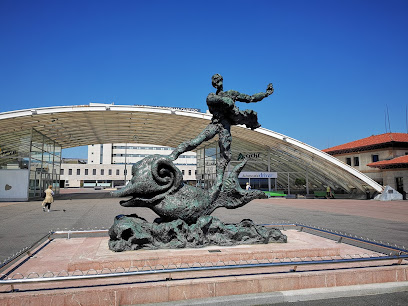
Escaleras acceso a la Plaza de los Ferroviarios
0.4 km
Explore the historic and scenic Escaleras de la Plaza de los Ferroviarios in Oviedo, a charming stairway that embodies the essence of Asturias.

Salamanque
0.4 km
Experience the captivating history and vibrant culture of Salamanque, a top tourist attraction in Oviedo, Asturias, known for its stunning architecture and lively atmosphere.

La Gabinona
0.4 km
Explore the cultural heart of Oviedo at La Gabinona, a stunning tourist attraction blending history, architecture, and local gastronomy.

Basilica of St. John The Regal
0.6 km
Explore the Basilica of St. John The Regal, a Gothic masterpiece in Oviedo, blending history and spirituality in a serene setting.

Basilica of St. John The Real
0.6 km
Explore the Basilica of St. John The Real in Oviedo, a stunning architectural gem rich in history and spiritual significance.

Fuente de la Plaza España
0.6 km
Discover the beauty of Fuente de la Plaza España, an iconic fountain in Oviedo that blends artistic heritage with vibrant city life.

Estanque de Los Patos
0.7 km
Discover the tranquil beauty of Estanque de Los Patos in Oviedo, a serene pond surrounded by lush gardens and vibrant wildlife.

Estatua de Mafalda
0.7 km
Discover the enchanting Statue of Mafalda in Oviedo, a unique blend of art, culture, and natural beauty in Asturias.

Estatua de Woody Allen
0.7 km
Discover the Woody Allen Statue in Oviedo - a unique tribute to cinematic artistry set against the backdrop of Asturian charm.

San Francisco Park
0.7 km
Explore San Francisco Park in Oviedo, a lush green space filled with beauty and culture, perfect for relaxation and leisure activities.

Museo de Geología - Universidad de Oviedo
0.7 km
Explore the Museo de Geología in Oviedo, where the fascinating world of minerals and fossils comes to life through engaging exhibits and educational experiences.
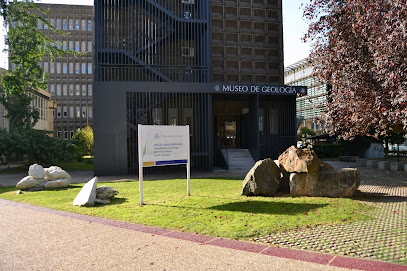
Fuente Ajardinada de Longoria
0.8 km
Discover the tranquility of Fuente Ajardinada de Longoria, a stunning fountain and garden oasis in the heart of Oviedo, Asturias.

El Palomar
0.8 km
Discover El Palomar in Oviedo, a captivating tourist attraction blending local culture, stunning architecture, and warm hospitality in the heart of Asturias.
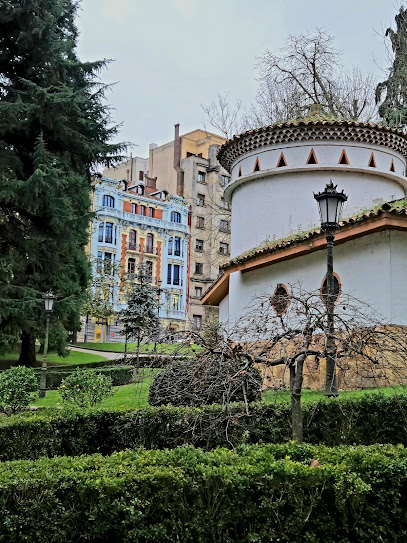
Essential places to dine
Gloria - Esther y Nacho Manzano
0.2 km
Experience the best of Asturian cuisine at Gloria - Esther y Nacho Manzano, where tradition meets innovation in every bite.

Mesón Sidrería Leonés
0.4 km
Savor authentic Asturian cuisine at Mesón Sidrería Leonés in Oviedo—where tradition meets taste in every dish.

Vinoteo La Fabada Asturiana en Oviedo / Uviéu
0.4 km
Experience authentic Asturian cuisine at Vinoteo La Fabada Asturiana in Oviedo - where tradition meets flavor.

Restaurante Del Arco
0.4 km
Discover authentic Mediterranean and Spanish flavors at Restaurante Del Arco in Oviedo – A culinary journey awaits you!

Restaurante Doña Concha
0.5 km
Experience authentic Spanish cuisine at Restaurante Doña Concha in Oviedo - where tradition meets taste in every delightful dish.
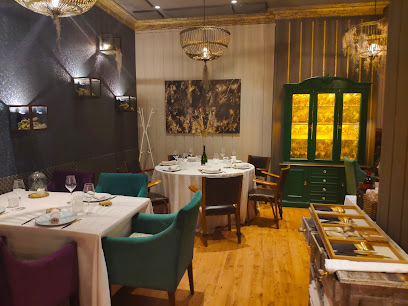
Billy Bob
0.5 km
Experience the flavors of America at Billy Bob in Oviedo - where delicious burgers, pizzas, and good times await!

Restaurante La Cocina de Manuel
0.5 km
Discover authentic Spanish cuisine at Restaurante La Cocina de Manuel in Oviedo, where every dish tells a story.

Restaurante Oviedo Nalón
0.5 km
Discover authentic Asturian flavors at Restaurante Oviedo Nalón with traditional dishes and a vibrant cider bar in the heart of Oviedo.

La Taberna Zíngara Oviedo
0.5 km
Savor authentic Andalusian and Mediterranean cuisine at La Taberna Zíngara in Oviedo – a must-visit for food lovers.

Kômiwa Restaurante japonés
0.5 km
Discover authentic Japanese flavors at Kômiwa Restaurante japonés in Oviedo - where tradition meets modern dining.

Eseteveinte - Restaurante en Oviedo
0.5 km
Discover Eseteveinte in Oviedo: Where Mediterranean and Spanish Flavors Create an Unforgettable Dining Experience.

Carta de Ajuste
0.6 km
Discover authentic Asturian cuisine at Carta de Ajuste in Oviedo - a culinary haven blending tradition with modern flair.

UMAMI
0.7 km
Experience authentic Japanese cuisine at UMAMI in Oviedo—where sushi meets tradition and every meal tells a story.

La Tabernilla de Oviedo
0.7 km
Savor authentic Asturian cuisine at La Tabernilla de Oviedo - where tradition meets flavor in every dish.

Taberna A'Carballeira
0.8 km
Experience authentic Galician flavors at Taberna A'Carballeira in Oviedo – where tradition meets taste in every delightful dish.
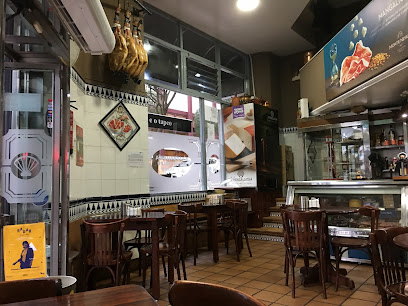
Markets, malls and hidden boutiques
Koopera Store Oviedo
0.3 km
Explore Koopera Store Oviedo: A Sustainable Fashion Destination for Unique Second-Hand Treasures.

Boutique Carlo
0.4 km
Discover elegance at Boutique Carlo in Oviedo, where fashion meets personalized service in a unique shopping experience.

La Factoría de Sueños
0.4 km
Explore La Factoría de Sueños, Oviedo's enchanting children's book and toy store, where imagination and creativity come alive through books and play.

Little Things Bisuteria Personalizada
0.4 km
Explore Little Things Bisuteria Personalizada for exquisite handcrafted jewelry and fashion accessories in the heart of Oviedo, Spain.

Maje
0.5 km
Explore Maje in Oviedo for stylish women's clothing, chic accessories, and unique leather goods that capture the essence of modern fashion.

AB BOUTIQUE
0.5 km
Explore Oviedo's fashion scene at AB Boutique, a charming clothing store offering unique styles and a welcoming atmosphere for every traveler.

Iglú Oviedo
0.5 km
Explore Iglú Oviedo for distinctive home goods, bedding, and furniture that capture the spirit of Asturias, perfect for souvenirs or enhancing your home.

Brocantia
0.5 km
Discover unique gifts and home goods at Brocantia in Oviedo – a perfect blend of tradition and modern design.

Kiehls
0.5 km
Discover Kiehl's in Oviedo, where beauty meets luxury with a stunning range of skincare, cosmetics, and unique gifts for every traveler.

El Galgo Gris
0.6 km
Discover unique gifts and exquisite costume jewelry at El Galgo Gris, the quintessential shopping stop in Oviedo, Asturias.

Charme Groom Boutique
0.6 km
Discover stylish menswear at Charme Groom Boutique in Oviedo, where modern fashion meets timeless elegance for every occasion.

Flying Tiger
0.6 km
Explore the whimsical charm of Flying Tiger in Oviedo, where unique gifts and playful products await every visitor.
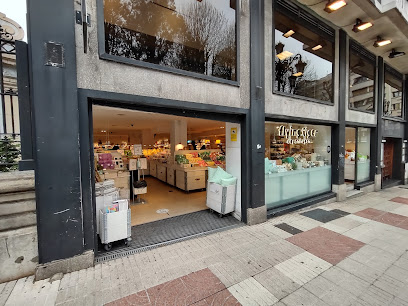
Salesas Shopping Mall
0.7 km
Explore the dynamic Salesas Shopping Mall in Oviedo for a unique shopping experience featuring diverse retailers and delightful dining options.

SINGULARU Trendy Jewels
0.7 km
Discover exquisite contemporary jewelry at SINGULARU Trendy Jewels in Oviedo, where style meets craftsmanship in a stunning shopping experience.

El Ganso Oviedo
0.7 km
Discover contemporary fashion and timeless elegance at El Ganso Oviedo, a premier clothing store for men and women in Asturias.

Essential bars & hidden hideouts
Coctelería SR Fox
0.3 km
Discover the vibrant cocktail scene at Coctelería SR Fox, Oviedo’s go-to destination for expertly crafted drinks and a lively atmosphere.

Oviedo Cocktail
0.4 km
Discover Oviedo Cocktail: A vibrant cocktail bar in Asturias, offering innovative drinks and a lively atmosphere for an unforgettable night out.

Bar Astur
0.5 km
Discover the flavors of Asturias at Bar Astur, a cozy bar and cafeteria in the heart of Oviedo, perfect for food lovers and casual diners.

Mas Que Copas
0.9 km
Discover the vibrant nightlife of Oviedo at Mas Que Copas, where live piano music and a lively atmosphere create unforgettable experiences.

ThunderBitchClub - Oviedo, Asturias
1.0 km
Discover the vibrant nightlife of Oviedo at ThunderBitchClub, where great music, delicious drinks, and a lively crowd await you.

Savanna Lodge Oviedo
1.0 km
Experience the vibrant nightlife at Savanna Lodge Oviedo, where delightful cocktails meet live piano music in a cozy atmosphere.

Pub Picos&Jazz Bar
1.0 km
Enjoy live jazz and a vibrant atmosphere at Pub Picos&Jazz Bar in Oviedo, the perfect spot for nightlife lovers.

Bar Don Vinazo
1.0 km
Experience the vibrant local culture at Bar Don Vinazo in Oviedo, where delicious tapas and local wines await in a cozy atmosphere.

The Desvan pub Oviedo
1.0 km
Experience the lively atmosphere and flavorful brews at The Desvan Pub in Oviedo, where great food and sports unite for a night to remember.

Mala Saña
1.0 km
Discover Mala Saña, Oviedo's premier cocktail bar, where expertly crafted drinks meet a vibrant atmosphere for unforgettable nights out.

The Black Bar
1.1 km
Experience the vibrant nightlife of Oviedo at The Black Bar, where expertly crafted cocktails meet a lively atmosphere.

Kiko Maracas
1.2 km
Discover the vibrant nightlife of Oviedo at Kiko Maracas, where live piano music and a welcoming atmosphere create unforgettable memories.

Bar Campa
1.2 km
Experience the warmth of Asturian hospitality at Bar Campa, a cozy bar in Oviedo offering local drinks and a vibrant atmosphere.

L'esperteyu Pub- Cervecería
1.3 km
Experience the vibrant nightlife of Oviedo at L'esperteyu Pub, where local flavors meet a lively atmosphere and excellent service.
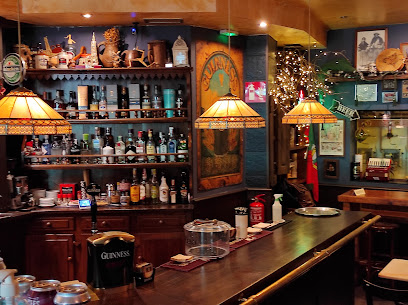
Bar Chicote
1.3 km
Experience the vibrant atmosphere of Bar Chicote in Oviedo, where live music meets great drinks in a welcoming pub setting.




